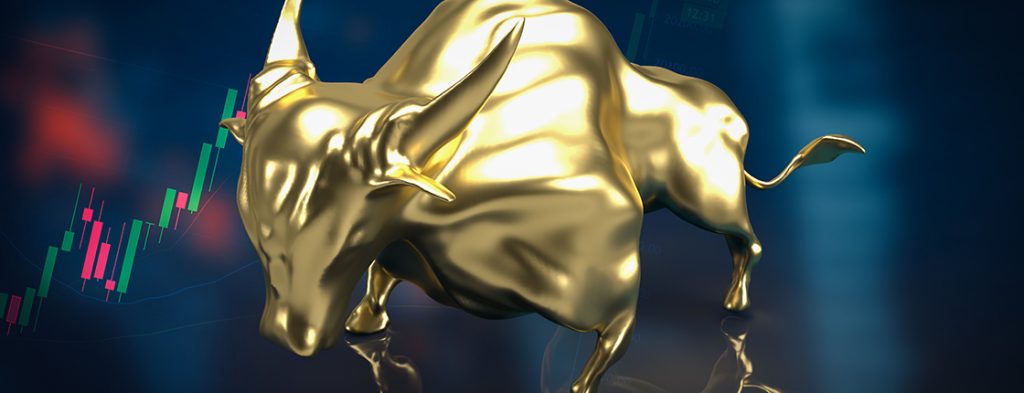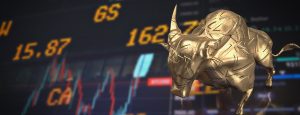The global economy thrives on the ebb and flow of financial markets. A bearish market, characterized by falling prices and widespread pessimism, often sends waves of uncertainty across industries and economies worldwide. Understanding bearish market trends is essential for businesses, institutional investors, and economists to assess risks and identify opportunities during downturns.
This blog dives into the causes and impacts of bearish markets on the global economy, with a detailed look at sectors such as the commodity market, soft commodities, raw materials, and the stock market. We’ll discuss market indicators, the role of commodities, and how different players like exchanges, futures traders, and industries respond in volatile times.
What Is a Bearish Market?
A bearish market occurs when securities see prolonged declining prices, usually signifying a fall of at least 20% from recent highs. Whether it’s a downturn in the stock market, weakening spot prices in the gold and silver trade, or sluggish performance in physical assets like crude oil and raw materials, bearish behavior is often tied to broader economic concerns.
Economic slowdown, tightening monetary policies, reduced consumer spending, or geopolitical events often initiate and fuel these market trends. An example is the widespread bearish trend visible during the 2008 global recession, which significantly affected commodities exchanges globally, such as the Chicago Mercantile Exchange (CME).
Key Characteristics of a Bearish Market
Bearish markets are typically marked by certain observable trends and behaviors. Here’s what defines them:
- Falling Prices: Stocks, commodities price, and other physical assets witness sharp declines, creating significant losses for investors.
- Low Investor Confidence: Institutional and retail investors often hesitate, halting investments in futures contracts, exchange-traded funds (ETFs), or even precious metals like gold and silver.
- High Volatility: Commodity futures trading and stock market indices see significant price swings, increasing risk for traders.
- Short Selling Popularity: Bearish phases often lead to a rise in short selling, wherein traders bet on falling asset values.
Causes of Bearish Markets
1. Economic Slowdown: When economic growth falters or enters recession, multiple industries face stagnation. For instance, floret commodities and other industries reliant on global trade see significant slowdowns as consumer spending decreases.
2. Geopolitical Tensions: Disruptions caused by conflicts or sanctions often send commodity price fluctuations spiraling. For example, oil-producing regions undergoing political instability directly impact crude oil prices globally.
3. Rising Interest Rates: When central banks tighten monetary policies to curb inflation, borrowing costs for businesses spike. This results in reduced corporate earnings, creating dips in the stock market and commodities markets alike.
4. High Supply with Lower Demand: Overproduction in industries, especially livestock and meat or raw materials, can lead to an oversupply, tanking spot prices across commodities exchanges.
5. Global Pandemic: Modern examples like COVID-19 disrupted supply chains, reduced consumer mobility, and caused nosedives in the PSX (Pakistan Stock Exchange) and others worldwide.
Industries Most Affected by Bearish Market Trends
1. Commodities Markets
Bearish trends heavily impact precious metals like gold and silver, soft commodities (e.g., coffee, cocoa), and even livestock and meat prices. Traders in commodity futures trading often pivot strategies, taking on more futures contracts to hedge against falling prices.
Platforms like PMEX (Pakistan Mercantile Exchange), the Chicago Mercantile Exchange, and others saw significant disruptions during past bearish cycles, with both physical assets (oil, livestock) and commodities include contracts dropping heavily in demand.
2. Energy Sector
Oil and gas markets suffer immensely during bearish phases. Falling crude oil prices slow production, causing ripple effects through commodity exchanges and energy-dependent industries.
3. Stock Markets
Bearish markets drop equity values, leading to significant losses for investors. The Securities and Exchange Commission of Pakistan (SECP) has begun closer monitoring of bearish trends at PSX to maintain trading stability.
4. Agriculture
A drop in commodity prices for essential goods like wheat, rice, and other soft commodities is crucial in countries dependent on agriculture. Lower returns result in economic strain for entire supply chains.
5. Industrial Raw Materials
Bearish behaviors often result in lower supply chain demand for industrial raw materials, slowing down production lines globally.
The Role of Commodities and Futures Trading in Bear Markets
Commodities are one of the central players affected during bearish market trends. These include both precious metals and soft commodities, with global trade influencing commodity futures trading. Futures contracts play a crucial role in hedging investor risks during market downturns.
Exchanges like the PMEX and Chicago Mercantile Exchange become critical touchpoints. They balance investor strategies between hedging risks and securing critical resources for industries leaning on raw materials and energy sources like crude oil.
Institutional investors who hold significant market influence often flock to safer avenues, such as asset-backed spot prices of gold. During the 2008 financial crisis, for example, ETF traders transitioned to precious metals, given their relative stability compared to the volatile equity and bond markets.
How to Navigate Bearish Trends as a Business or Investor
While bearish trends can induce panic, they also present opportunities for thoughtful strategies. Here are ways businesses and investors can thrive:
1. Diversify Portfolios: Invest in a mix of stocks, commodities markets, ETFs, and mutual funds to spread risks during uncertain market cycles.
2. Focus on Hedging with Futures: Utilize commodity futures trading and futures contracts to mitigate losses in volatile markets.
3. Explore Defensive Sectors: Invest in industries like healthcare or essential goods that are less affected by declining commodity price trends.
4. Leverage Expertise: Working with experienced traders, investment brokers, or reading up on resources like Wikipedia the free encyclopedia, can provide valuable insights.
5. Proactive Industry Planning: Businesses with raw material dependencies should analyze spot prices across exchanges frequently and adjust procurement schedules to prevent overspending.
Optimism Beyond the Downturn
While bearish market trends and collapsing commodity price indices can shake industries and economies alike, they often precede a period of recovery fueled by technological innovation, diversified investments, and well-planned business strategies.
When navigating bearish markets, leveraging commodity exchanges like PMEX or the Chicago Mercantile Exchange and closely tracking performance insights presented by entities like the Securities and Exchange Commission of Pakistan can offer significant advantages.



